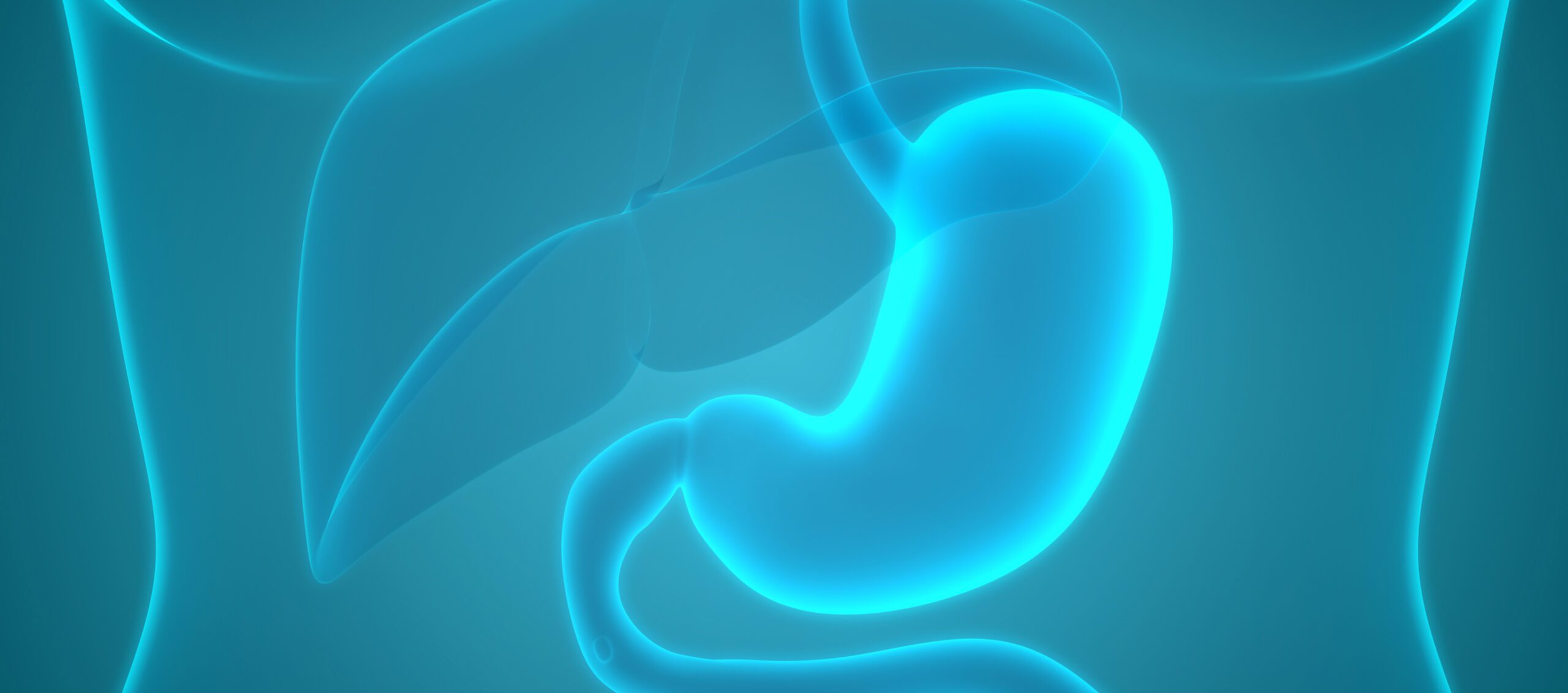Esophageal carcinomas are comparatively rare tumors and account for approximately 1% of all malignancies worldwide. Based on their location, a distinction is made between cervical and intrathoracic tumors. Histologically, they manifest as squamous cell carcinomas and adenocarcinomas. Depending on the tumor, other therapy standards take effect.
You can take the CME test in our learning platform after recommended review of the materials. Please click on the following button:
Esophageal carcinomas are comparatively rare tumors and account for approximately 1% of all malignancies worldwide. Based on their location, a distinction is made between cervical and intrathoracic tumors. Histologically, they manifest as squamous cell carcinomas and adenocarcinomas [1]. Squamous cell carcinoma of the esophagus is the most common carcinoma of the esophagus worldwide and occurs more frequently in the “asian esophageal cancer-belt” [2]. In Western industrialized nations, the incidence of adenocarcinoma has been steadily increasing in recent decades. Meanwhile, adenocarcinomas account for 40-50% of esophageal tumors here. The risk of developing esophageal cancer is three to four times higher for men. In Germany, there are about 5500 new cases in men and 1500 in women every year. On average, men and women with the disease are 67 and 72 years old, respectively [3].
Risk factors and symptoms
Adenocarcinomas usually arise based on chronic reflux disease and the resulting transformation of the mucosa into Barrett’s esophagus [4]. In addition, chronic nicotine use, obesity, and achalasia have been identified as risk factors [5]. For squamous cell carcinomas, chronic nicotine consumption and excessive alcohol consumption in particular have been identified. However, mechanical damage from achalasia, acid and alkali injury, and previous radiation therapy may also predispose to the development of squamous cell carcinoma [6].
Early carcinomas are usually asymptomatic. Dysphagia or odynophagia, recurrent vomiting, nausea, early feeling of fullness, weight loss, thoracic pain, and gastrointestinal bleeding or anemia usually occur only in locally advanced carcinomas [4].
Staging
The most important measure for the primary diagnosis of esophageal cancer is high-resolution videoendoscopy [4]. In addition to determining the location and extent of the tumor and detecting metaplastic changes in the lower esophagus, a biopsy may be performed simultaneously to confirm the diagnosis. Endoscopic ultrasound should be added to further assess local spread (Table 1-3) [7]. In newly diagnosed esophageal cancer, multidetector computed tomography with contrast of the cervical thorax and abdomen should be performed as a standard procedure [8]. PET-CT can be performed especially in locally advanced tumors (cT2-4 cN+) to exclude distant metastases if there is a potentially curative intention to treat or if the result would have clinical consequences [9,10]. If a locally advanced tumor is in contact with the tracheobronchial system, staging must be extended to include flexible bronchoscopy [11]. Diagnostic laparoscopy should be performed for locally advanced tumors (cT3, cT4) of the lower esophagus to exclude peritoneal metastases [12].
Therapy
The treatment decision for carcinomas of the esophagus should always be discussed and made on an interdisciplinary basis, preferably in the context of an interdisciplinary tumor conference. In addition to tumor-specific factors, patient-specific factors also play a decisive role in the decision-making process. Entity-specific comorbidities (cardiovascular, pulmonary, hepatic) are often present and can significantly complicate therapy. Even potentially resectable tumors can thus be functionally inoperable [13]. In addition to a reduced general condition, patients often already have a reduced nutritional status [14]. The nutritional care of patients should be an integral part of interdisciplinary care (Fig. 1, 2).
T1a N0 M0 (early carcinoma)
Mucosectomy by endoscopic resection is considered the standard of care for adenocarcinoma pT1 m1-m3 and squamous cell carcinoma pT1 m1-m2. For accurate and complete evaluation of the lateral and basal margins on histologic examination, en bloc resection should be performed and R0 resection should be aimed for [15]. Surgical resection should be performed for risk factors such as R1 resection or a multifocal or nonablatable Barrett’s lesion. If a histologically confirmed squamous cell carcinoma T1m3 or a T1b tumor is confirmed post-interventionally, surgical resection with lymphadenectomy is recommended. Surgical resection should be discussed in the case of confirmed G3 carcinoma or in the presence of lymphatic or venous invasion or deep submucosal infiltration (>500 µm) after endoscopic resection [4].
T1b-T2 N0 M0
Therapy of choice at this stage for thoracic carcinoma is surgical resection with lymphadenectomy. If surgical resection after endoscopic ablation of a squamous cell carcinoma T1b sm1-2 is rejected, adjuvant radiochemotherapy can be performed as an alternative [16]. If patients are not eligible for surgical resection, curative intentional radiochemotherapy (RCT) may be performed. For T2 N0 carcinomas, neoadjuvant RCT may be performed before surgery .
T3-4 N0/N+ M0
Esophageal carcinomas (squamous as well as adenocarcinomas) should be treated from a cT3 stage and/or N+ as part of multimodal concepts. In addition to curative intended surgery, neoadjuvant RCT is available here as a complementary approach [4]. The randomized CROSS trial (n=368 patients) demonstrated an overall survival benefit for preoperative RCT for both squamous and adenocarcinomas. The median overall survival in the group of patients treated preoperatively was 49.4 months vs. 24.0 months in the group of patients who only underwent resection (HR 0.66, 95% CI (0.49-0.87), p=0.003) [18]. Patients received preoperative radiochemotherapy to 41.4 Gy with concomitant weekly chemotherapy consisting of carboplatin (AUC 2) and paclitaxel (50 mg/m² KOF) followed by surgery or surgery alone. The overall survival benefit was more pronounced in the squamous cell carcinoma group than in the adenocarcinoma group (PECA: 82 vs. 21 months, HR 0.48, p=0.007; adeno: 43 vs. 27 months, HR 0.73, p=0.061). There was no difference in the number of postoperative complications. Meta-analyses have confirmed the benefit of neoadjuvant radiochemotherapy for squamous and adenocarcinomas, from a stage ≥cT3, making combined preoperative RCT followed by surgery the 1st choice therapy for these tumors .
So far, there was no indication for adjuvant therapy after successful neoadjuvant RCT and surgery. Following publication of the multicenter, randomized phase III CheckMate 577 study, this situation has changed [21]. This study investigated whether the addition of adjuvant nivolumab therapy after R0 resection has occurred in the absence of pathologic complete remission after preoperative RCT can improve survival. A total of 794 patients were included who were randomized to receive either nivolumab or placebo for one year after surgery. Disease-free survival was examined as the primary endpoint. On median, this was prolonged by nivolumab from 11 to 22.4 months (HR 0.69; 95% CI 0.56-0.86, p=0.0003). Both histologic subtypes benefited equally, although the effect was more pronounced in squamous cell carcinomas than in adenocarcinomas (HR 0.61 vs. HR 0.75). There was no difference in outcome between PD-L1 positive and PD-L1 negative tumors. The study also showed that immunotherapy is easy to administer and that the patients’ quality of life did not deteriorate compared to placebo. However, at this time, overall survival data are still lacking. An approval for nivolumab in adjuvant therapy was granted by the European Medicines Commission in September 2021. A strong treatment recommendation was also made by ASCO for adjuvant nivolumab therapy after neoadjuvant radiochemotherapy and completely resected esophageal cancer without pathologic complete remission .
After R1 resection and failure of neoadjuvant radiochemotherapy, postoperative radiochemotherapy may be given to improve local control .
Patients who are functionally inoperable or whose tumors are technically inoperable or who refuse surgery should be treated with definitive radiochemotherapy, regardless of whether the tumor is adenocarcinoma or squamous cell carcinoma. Regarding concomitant chemotherapy concomitant with radiotherapy, the literature shows good data for the combination of carboplatin and paclitaxel, but alternatively a platinum and fluoropyrimidine combination can be used [18,24]. A French paper recently demonstrated comparable efficacy of the FOLFOX regimen (oxaliplatin + 5-FU) concomitant to definitive radiotherapy compared with concomitant chemotherapy with 5-FU and cisplatin [25]. The standard radiotherapy used in the preoperative situation with concomitant carboplatin/paclitaxel chemotherapy also appears to be feasible in the definitive situation [26].
A definitive RCT should target an irradiation dose of 50.4 Gy. Higher dose does not improve local tumor control or overall survival, regardless of histologic subtype (squamous or adenocarcinoma), according to the current data from the Dutch ARTDECO trial .
For more conformal target volume coverage and better sparing of organs at risk (heart, lungs), radiotherapy should be intensity-modulated (IMRT) [28].
Tumors of the cervical esophagus
The standard therapy for cervical esophageal cancer is definitive radiochemotherapy with the above dose specifications and systemic therapeutics. Due to increased complication rates and postoperative disorders, surgery should not be performed [29,30].
Each T, each N, M1
First choice in the metastatic setting is systemic therapy, which can prolong patient survival. However, no phase III studies are available for squamous cell carcinoma. Nevertheless, systemic therapy is recommended in the international guidelines [31]. Systemic therapy should be planned with consideration of general condition, comorbidities, patient preference, and treatment toxicity. Prognosis was not improved by resection of the primary tumor. Prior to initiation of palliative systemic therapy, PD-L1 CPS should be evaluated as a predictive factor for therapy with an immune checkpoint inhibitor [4]. In first-line therapy, chemotherapy should be combined with immunotherapy [32–34]. For squamous cell carcinoma, platinum/fluoropyrimidine-based chemotherapy is combined with pembrolizumab for a CPS ≥10 [4]. If CPS <10, palliative systemic chemotherapy should be given with a platinum derivative in combination with 5-FU or taxane [4]. In adenocarcinomas, HER2 status should be determined in addition to PD-L1 CPS [4]. Systemic therapy includes platinum/fluoropyrimidine-containing therapy in a two/three-drug combination for CPS <5 and negative HER2 status. When PD-L1 CPS is ≥5 for nivolumab or ≥10 for pembrolizumab, the combination is with a platinum and fluoropyrimidine derivative [4]. If Her2 is overexpressed (IHC3+, IHC2+, FISH+), trastuzumab is added to first-line therapy [35]. Percutaneous radiotherapy or brachytherapy for systemic therapy may be considered if local symptoms (hemorrhage, stenosis, compression) are present [36]. Endoscopic metal stent implantation can be performed for rapid relief of dysphagia, although simultaneous percutaneous radiotherapy after metal stent implantation should be avoided because it is associated with an increased complication rate [31,37].
Take-Home Messages
- Therapeutic standard for T1 m1-m3 adenocarcinoma and T1 m1-m2 squamous cell carcinoma: mucosectomy by endoscopic resection. For risk factors (including R1, nonablatable Barrett’s lesions) –> surgical resection.
- Prognostic improvement by treatment of locally advanced esophageal cancer in the context of multimodal therapy concepts (neoadjuvant RCTx + surgery).
- In squamous cell and adenocarcinoma of the esophagus after neoadjuvant radiochemotherapy and complete resection (R0) without pathological complete remission –> consolidating immunotherapy regardless of PD-L1 status.
- For distant metastatic squamous cell carcinoma: platinum-based chemotherapy, in first-line also in combination with checkpoint inhibitors (PD-L1 CPS ≥10).
- For distant metastatic adenocarcinoma: combination chemotherapy with immunotherapy (PD-L1 CPS ≥5) or if HER-2 positive. [Trastuzumab]
- In case of irradiation in neoadjuvant, definitive or palliative intention: omission of metal stent implantation.
Literature:
- German Society for Hematology and Medical Oncology e.V. Onkopedia. Esophageal cancer. Status 2022. www.onkopedia.com/de/onkopedia/guidelines/oesophaguskarzinom/@@guideline/html/index.html; retrieved Nov. 23, 2022.
- Pakzad R, Mohammadian-Hafshejani A, Khosravi B, et al: The incidence and mortality of esophageal cancer and their relationship to development in Asia. Ann Transl Med 2016 Jan;4(2): 29. doi: 10.3978/j.issn.2305-5839.2016.01.11
- Robert Koch Institute and the Society of Epidemiological Cancer Registries in Germany e.V. Cancer in Germany for 2017/2018. Berlin, 2021
- Guideline program on oncology (German Cancer Society, German Cancer Aid, AWMF): Diagnostics and therapy of squamous cell carcinomas and adenocarcinomas of the esophagus; long version 3.1, 2022, AWMF register number: 021/023OL, www.leitlinienprogramm-onkologie.de/leitlinien/oesophaguskarzinom. Accessed at [23 .11.2022].
- Domper Arnal MJ, Ferrández Arenas Á, Lanas Arbeloa Á: Esophageal cancer: Risk factors, screening and endoscopic treatment in Western and Eastern countries. World J Gastroenterol. 2015 Jul 14;21(26): 7933-7943.
- Wheeler JB, Reed CE: Epidemiology of esophageal cancer. Surg Clin North Am. 2012 Oct;92(5): 1077-1087. doi: 10.1016/j.suc.2012.07.008.
- Russell IT, Edwards RT, Gliddon AE, et al: Cancer of esophagus or gastricus-New Assessment of Technology of Endosonography (COGNATE): report of pragmatic randomised trial. Health Technol Assess 2013 Sep; 17(39): 1-170. doi: 10.3310/hta17390.
- Makarawo TP, Negussie E, Malde S, et al: Water as a contrast medium: a re-evaluation using the multidetector-row computed tomography. Am Surg. 2013 Jul; 79(7): 728-733.
- de Gouw DJJM, Klarenbeek BR, Driessen M, et al: Detecting Pathological Complete Response in Esophageal Cancer after Neoadjuvant Therapy Based on Imaging Techniques: A Diagnostic Systematic Review and Meta-Analysis. J Thorac Oncol 2019 Jul; 14(7): 1156-1171. doi: 10.1016/j.jtho.2019.04.004.
- Jiang C, Chen Y, Zhu Y, Xu Y: Systematic review and meta-analysis of the accuracy of 18F-FDG PET/CT for detection of regional lymph node metastasis in esophageal squamous cell carcinoma. J Thorac Dis 2018 Nov;10(11): 6066-6076. doi: 10.21037/jtd.2018.10.57.
- 11 Osugi H, Nishimura Y, Takemura M, et al: Bronchoscopic ultrasonography for staging supracarinal esophageal squamous cell carcinoma: impact on outcome. World J Surg 2003 May; 27(5): 590-594. doi: 10.1007/s00268-003-6784-3
- 12 Findlay JM, Bradley KM, Maile EJ, et al: Pragmatic staging of oesophageal cancer using decision theory involving selective endoscopic ultrasonography, PET and laparoscopy. Br J Surg, 2015 102(12): 1488-1499.
- Lagergren J, Smyth E, Cunningham D, Lagergren P: Oesophageal cancer. Lancet 2017 Nov 25; 390(10110): 2383-2396. doi: 10.1016/S0140-6736(17)31462-9.
- van Stijn MF, Korkic-Halilovic I, Bakker MS, et al: Preoperative nutrition status and postoperative outcome in elderly general surgery patients: a systematic review. JPEN J Parenter Enteral Nutr 2013 Jan; 37(1): 37-43. doi: 10.1177/0148607112445900.
- Pech O, Bollschweiler E, Manner H, et al: Comparison between endoscopic and surgical resection of mucosal esophageal adenocarcinoma in Barrett’s esophagus at two high-volume centers. Ann Surg 2011 Jul;254(1): 67-72. doi: 10.1097/SLA.0b013e31821d4bf6.
- Minashi K, Nihei K, Mizusawa J, et al: Efficacy of endoscopic resection and selective chemoradiotherapy for stage I esophageal squamous cell carcinoma. Gastroenterology 2019 Aug; 157(2): 382-390.e3. doi: 10.1053/j.gastro.2019.04.017.
- Thuss-Patience P, Vecchione L, Keilholz U: Should cT2 esophageal cancer get neoadjuvant treatment before surgery? J Thorac Dis 2017 Sep; 9(9): 2819-2823. doi: 10.21037/jtd.2017.08.143.
- van Hagen P, Hulshof MC, van Lanschot JJ, et al: CROSS Group. Preoperative chemoradiotherapy for esophageal or junctional cancer. N Engl J Med 2012 May 31; 366(22): 2074-2084. doi: 10.1056/NEJMoa1112088.
- Sjoquist KM, Burmeister BH, Smithers BM, et al: Australasian Gastro-Intestinal Trials Group. Survival after neoadjuvant chemotherapy or chemoradiotherapy for resectable oesophageal carcinoma: an updated meta-analysis. Lancet Oncol 2011 Jul;12(7): 681-692. doi: 10.1016/S1470-2045(11)70142-5.
- Ronellenfitsch U, Schwarzbach M, Hofheinz R, et al: GE Adenocarcinoma Meta-analysis Group. Perioperative chemo(radio)therapy versus primary surgery for resectable adenocarcinoma of the stomach, gastroesophageal junction, and lower esophagus. Cochrane Database Syst Rev 2013 May 31;(5): CD008107. doi: 10.1002/14651858.CD008107.pub2
- Kelly RJ, Ajani JA, Kuzdzal J, et al: CheckMate 577 Investigators. Adjuvant nivolumab in resected esophageal or gastroesophageal junction cancer. N Engl J Med 2021 Apr 1; 384(13): 1191-1203. doi: 10.1056/NEJMoa2032125
- Shah MA, Hofstetter WL, Kennedy EB; Locally Advanced Esophageal Carcinoma Guideline Expert Panel: Immunotherapy in Patients With Locally Advanced Esophageal Carcinoma: ASCO Treatment of Locally Advanced Esophageal Carcinoma Guideline Rapid Recommendation Update. J Clin Oncol 2021 Oct 1;39(28): 3182-3184.
doi: 10.1200/JCO.21.01831 - Fok M, Sham JS, Choy D, et al: Postoperative radiotherapy for carcinoma of the esophagus: a prospective, randomized controlled study. Surgery 1993 Feb;113(2): 138-147.
- Walsh TN, Noonan N, Hollywood D, et al: A comparison of multimodal therapy and surgery for esophageal adenocarcinoma. N Engl J Med 1996 Aug 15; 335(7): 462-467. doi: 10.1056/NEJM199608153350702.
- Conroy T, Galais MP, Raoul JL, et al: Fédération Francophone de Cancérologie Digestive and UNICANCER-GI Group. Definitive chemoradiotherapy with FOLFOX versus fluorouracil and cisplatin in patients with oesophageal cancer (PRODIGE5/ACCORD17): final results of a randomised, phase 2/3 trial. Lancet Oncol 2014 Mar; 15(3): 305-314. doi: 10.1016/S1470-2045(14)70028-2.
- Honing J, Smit JK, Muijs CT, et al: A comparison of carboplatin and paclitaxel with cisplatinum and 5-fluorouracil in definitive chemoradiation in esophageal cancer patients. Ann Oncol 2014 Mar; 25(3): 638-643. doi: 10.1093/annonc/mdt589.
- Hulshof MCCM, Geijsen ED, Rozema T, et al: Randomized Study on Dose Escalation in Definitive Chemoradiation for Patients With Locally Advanced Esophageal Cancer (ARTDECO Study). J Clin Oncol 2021 Sep 1; 39(25): 2816-2824. doi: 10.1200/JCO.20.03697.
- Zhu WG, Xua DF, Pu J, et al: A randomized, controlled, multicenter study comparing intensity-modulated radiotherapy plus concurrent chemotherapy with chemotherapy alone in gastric cancer patients with D2 resection. Radiother Oncol 2012 Sep; 104(3): 361-366. doi: 10.1016/j.radonc.2012.08.024.
- Gkika E, Gauler T, Eberhardt W, et al: Long-term results of definitive radiochemotherapy in locally advanced cancers of the cervical esophagus. Dis Esophagus. 2014 Sep-Oct; 27(7): 678-684. doi: 10.1111/dote.12146.
- Grass GD, Cooper SL, Armeson K, et al: Cervical esophageal cancer: a population-based study. Head Neck 2015 Jun; 37(6): 808-814. doi: 10.1002/hed.23678.
- NCCN Clinical Practice Guidelines in Oncology (NCCN Guidelines) Esophageal and Esophagogastric Junction Cancers Version 4.2022 – September 7, 2022, accessed at [24 .11.2022].
- Kato K, Shah MA, Enzinger P, et al: KEYNOTE-590: Phase III study of first-line chemotherapy with or without pembrolizumab for advanced esophageal cancer. Future Oncol 2019 Apr; 15(10): 1057-1066. doi: 10.2217/fon-2018-0609.
- Doki Y, Ajani JA, Kato K, et al: CheckMate 648 Trial Investigators. Nivolumab Combination Therapy in Advanced Esophageal Squamous-Cell Carcinoma. N Engl J Med 2022 Feb 3; 386(5): 449-462. doi: 10.1056/NEJMoa2111380.
- Janjigian YY, Shitara K, Moehler M, et al: First-line nivolumab plus chemotherapy versus chemotherapy alone for advanced gastric, gastroesophageal junction, and esophageal adenocarcinoma (CheckMate 649): a randomised, open-label, phase 3 trial. Lancet 2021 Jul 3; 398(10294): 27-40. doi: 10.1016/S0140-6736(21)00797-2.
- Bang YJ, Van Cutsem E, Feyereislova A, et al: ToGA Trial Investigators. Trastuzumab in combination with chemotherapy versus chemotherapy alone for treatment of HER2-positive advanced gastric or gastro-oesophageal junction cancer (ToGA): a phase 3, open-label, randomized controlled trial. Lancet 2010 Aug 28; 376(9742): 687-697. doi: 10.1016/S0140-6736(10)61121-X.
- Amdal CD, Jacobsen AB, Guren MG, Bjordal K: Patient-reported outcomes evaluating palliative radiotherapy and chemotherapy in patients with oesophageal cancer: a systematic review. Acta Oncol 2013 May; 52(4): 679-690. doi: 10.3109/0284186X.2012.731521.
- Grünberger B, Raderer M, Schmidinger M, Hejna M: Palliative chemotherapy for recurrent and metastatic esophageal cancer. Anticancer Res 2007 Jul-Aug; 27(4C): 2705-2714.
GASTROENTEROLOGIE PRAXIS 2023; 1(2): 10-15

















